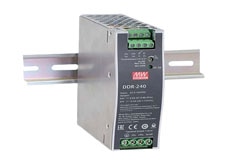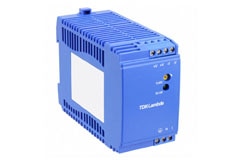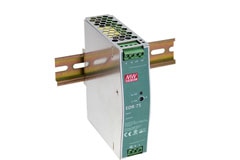Power Supplies - External/Internal (Off-Board)
659 ResultsAbout Power Supplies - External/Internal (Off-Board)
External/Internal (Off-Board) Power Supplies are standalone power conversion units meant to be mounted into an enclosure or onto a chassis rather than directly onto a board. They are designed to handle higher power levels, have greater isolation, and withstand more demanding environmental and safety requirements than typical board mount supplies. They are widely used in industrial systems, medical devices, communications equipment, embedded platforms, and infrastructure applications.
Types of External/Internal (Off-Board) Power Supplies
- AC DC Desktop, Wall Power Adapters - Convert mains AC (120-240 VAC) to one or more regulated DC outputs to be plugged into external devices.
- AC DC Converters and DC DC Converters - Modules mounted on external chassis or into cabinets/racks. Capable of converting AC (120-240 VAC) to DC or stepping DC voltages up or down.
- LED Drivers - Constant current or constant voltage power supplies tailored for powering LED lighting systems. These incorporate dimming control and thermal protection for lighting.
- PoE Injectors - Power supplies that deliver both data and DC power through Ethernet cabling, conforming to IEEE 802.3af/at/bt standards.
- Industrial, DIN Rail Power Supplies - Ruggedized enclosed power supplies designed to withstand harsh ambient conditions while mounted in control panels or industrial cabinets.
Key Advantages and Regulatory Compliance
External/Internal (Off-Board) Supplies offer engineers several critical technical benefits and come with regulatory compliance important for product safety, reliability, and market access.
- High power capacity & voltage scaling - capable of handling higher currents and voltages, enabling wider input ranges and greater headroom for transient loads.
- Enhanced isolation and safety - more clearance, creepage, and insulation in the enclosure.
- Form factor and mounting variety - DIN-rail, open-frame, enclosed modules, plug-packs, wall adapters, etc. provide flexibility in mechanical design.
- Standards such as UL/IEC 60950-1, UL/IEC 62368-1, IEC/EN 60601-1 provide minimum design requirements for protection against electric shock, fire, and mechanical hazards.
- EMI/EMC compliance regulations like EN 55032, FCC Part 15, CISPR protect against conducted and radiated emissions preventing external interference vulnerability.
- Certification marking such as CE in Europe, UL / cUL in North America, CCC in China, and PSE in Japan ensure the supply is market ready, reducing costly requalification late in the design cycle.





















